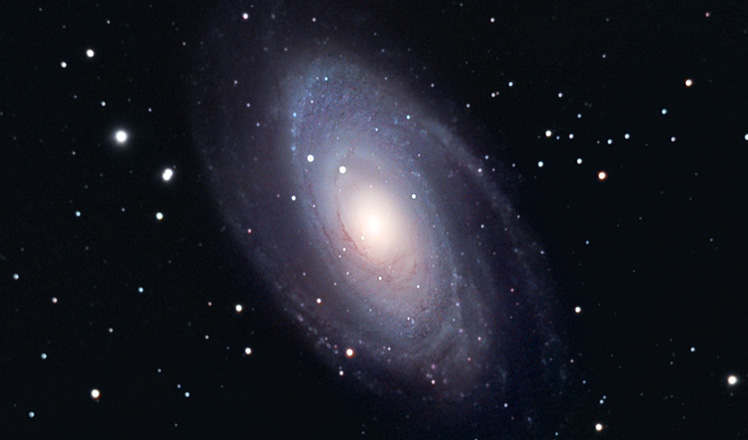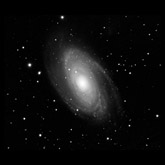M81, one of the brightest galaxies in our skies, was discovered by Johann Bode on New Year's Eve 1774. It is near the Big Dipper and it is one of my favorite winter galaxies.
There are very few galaxies in the sky that are better than M81 for astrophotographers. Its beautiful spiral arms are more interesting than those of the brighter (and much larger) M31. And M81 is larger and brighter than M51. On those cold, wintry Northern Hemisphere nights, be sure to give this galaxy its due.
Imaging Notes
M81 is bright enough that you may be tempted to skimp on exposure time. You will be able to make out the spiral arms after only a few minutes of exposure, but there is a wealth of detail in this galaxy and the longer you expose, the better that detail will come out.
Use layer masks to separately enhance each zone of the galaxy. The faint outer arms usually needs brightening and noise-reduction, while the bright part of the disk needs sharpening and contrast enhancement.
Guide your processing by noticing the distinctive features of M81. The two outer arms are not quite symmetric: in the image above, the right arm is thin and distinct, while the left arm looks more like a faint fan of stars. At the same time, make sure you preserve the ragged edges of the galaxy.
Notice the dark dust lanes that appear to the left of the core. Try to bring them out by increasing the contrast in the disk. Finally, note the faint, perpendicular streaks of dust beneath the core. Those unusual features are probably dust clouds that are sticking out of the plane of the galaxy.
I had some trouble color-balancing the above image, probably because I did not capture enough data. Nevertheless, the colors of M81 are very subtle. The red HII regions in the galaxy are small and difficult to capture (they are nearly invisible in the image above). Use a Hydrogen-Alpha filter for best results.

